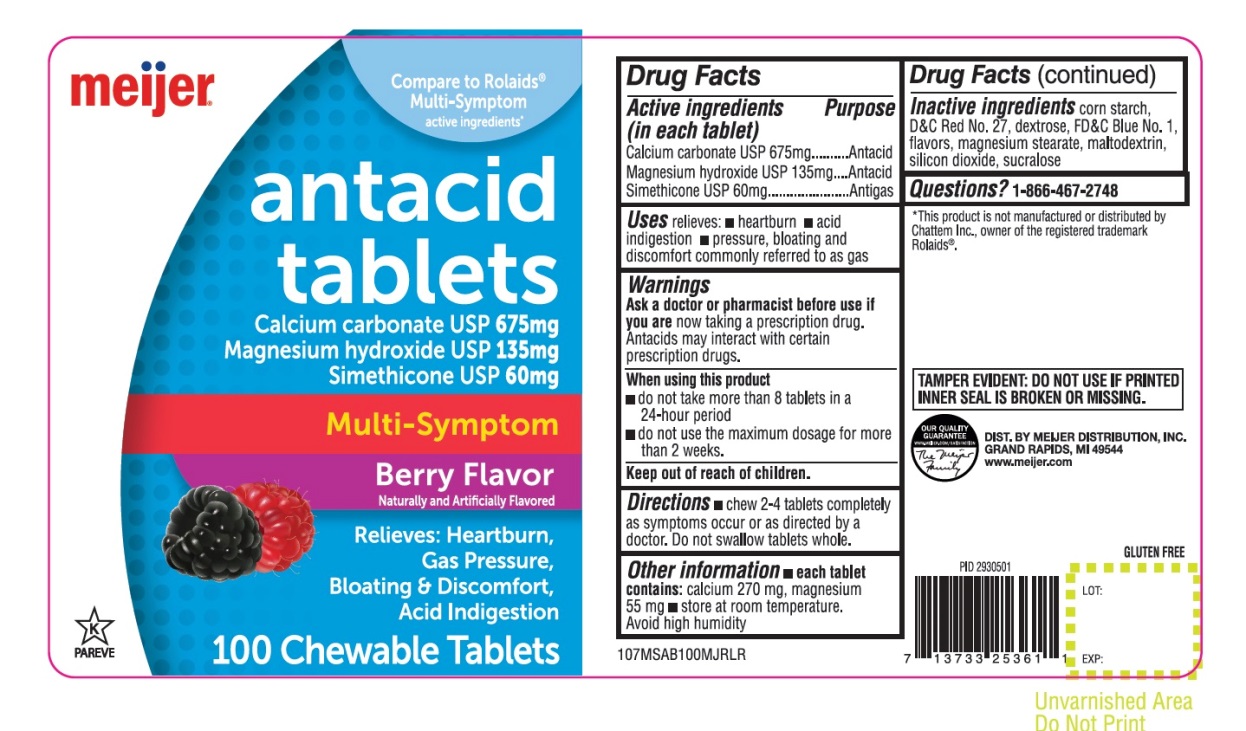Multi Symptom Antacid Berry Flavor while Breastfeeding

What is Multi Symptom Antacid Berry Flavor used for?
Brief: Antacid Antacid Antigas
Multi Symptom Antacid Berry Flavor while breastfeeding safe or not? Can there be any side effects for infant while using it during breastfeeding?

Multi Symptom Antacid Berry Flavor Breastfeeding Analsys
Calcium carbonate while Breastfeeding
SafeVarious calcium salts (Acetate, Carbonate, Chloride, Citrate, Phosphate, Gluceptate, Glucobionato, Lactate, Laxctobionato Pidolate, Silicate) are used in the management of hypocalcemia, supplements for treating calcium deficiency states and antacids ( Carbonate and Silicate) Daily requirement of calcium during lactation are 1 g (1.3 g in children under 20 years).Calcium supplements in the diet does not affect the concentration of calcium in milk.Excessive intake of calcium is not good for health. During lactation, consumption of calcium should not exceed 2.5 g a day. WHO List of Essential Medicines 2002 states that it is compatible with breastfeeding.
Magnesium hydroxide while Breastfeeding
SafeCAS Number: 1309-42-8
Ingested Magnesium does not concentrate into breast milk.. Naturally occurring, the mean Magnesium concentration in the milk is 31 mg/L (range 15 – 64 mg/L) and not affected by the ingestion of Magnesium. Because of a low oral bioavailability the pass from the breast milk toward the infant's plasma is hampered, except in premature and newborn infants who may exhibit a higher intestinal absorption due to an increased permeability. Avoid chronic or excessive use. WHO Model List of Essential Medicines 2002: Magnesium hydroxide is compatible with breastfeeding.
Dimethicone while Breastfeeding
SafeCAS Number: 9006-65-9
Dimethicone is a fluid type of silicone with a methyl as organic group radical. Silicones are polymers of silicon tied to oxygen atoms with high molecular weight (see information on silicone and dimethicone). Dimethicone is water repellent and it is used in creams, dressings for skin protection and pediculicides. An activated form of Dimethicone is Simethicone that is used for treatment of flatulence (see info on Simethicone) At latest update, relevant published data on excretion into breast milk were not found. Because it is not absorbed through the skin or orally along with a high molecular weight, excretion into breast milk in significant amount or absorption by the infant gut is highly unlikely. See below the information of these related products:
Multi Symptom Antacid Berry Flavor Breastfeeding Analsys - 2
Magnesium hydroxide while Breastfeeding
CAS Number: 1309-42-8
A study on the use of magnesium hydroxide during breastfeeding found no adverse reactions in breastfed infants. Intravenous magnesium increases milk magnesium concentrations only slightly. Oral absorption of magnesium by the infant is poor, so maternal magnesium hydroxide is not expected to affect the breastfed infant's serum magnesium. Magnesium hydroxide supplementation during pregnancy might delay the onset of lactation, but it can be taken during breastfeeding and no special precautions are required.
What should I do if I am breastfeeding mother and I am already exposed to Multi Symptom Antacid Berry Flavor?
It is always a good idea to keep your healthcare provider or doctor informed about your drug usage during pregnancy and breastfeeding but if you have not informed your doctor about Multi Symptom Antacid Berry Flavor and have used it then do not panic as Multi Symptom Antacid Berry Flavor is mostly safe in breastfeeding and should not cause any harm to your baby.
I am nursing mother and my doctor has suggested me to use Multi Symptom Antacid Berry Flavor, is it safe?
Usage of Multi Symptom Antacid Berry Flavor is safe for nursing mothers and baby, No worries.
If I am using Multi Symptom Antacid Berry Flavor, will my baby need extra monitoring?
No
Who can I talk to if I have questions about usage of Multi Symptom Antacid Berry Flavor in breastfeeding?
US
National Womens Health and Breastfeeding Helpline: 800-994-9662 (TDD 888-220-5446) 9 a.m. and 6 p.m. ET, Monday through Friday
UK
National Breastfeeding Helpline: 0300-100-0212 9.30am to 9.30pm, daily
Association of Breastfeeding Mothers: 0300-330-5453
La Leche League: 0345-120-2918
The Breastfeeding Network supporter line in Bengali and Sylheti: 0300-456-2421
National Childbirth Trust (NCT): 0300-330-0700
Australia
National Breastfeeding Helpline: 1800-686-268 24 hours a day, 7 days a week
Canada
Telehealth Ontario for breastfeeding: 1-866-797-0000 24 hours a day, 7 days a week
